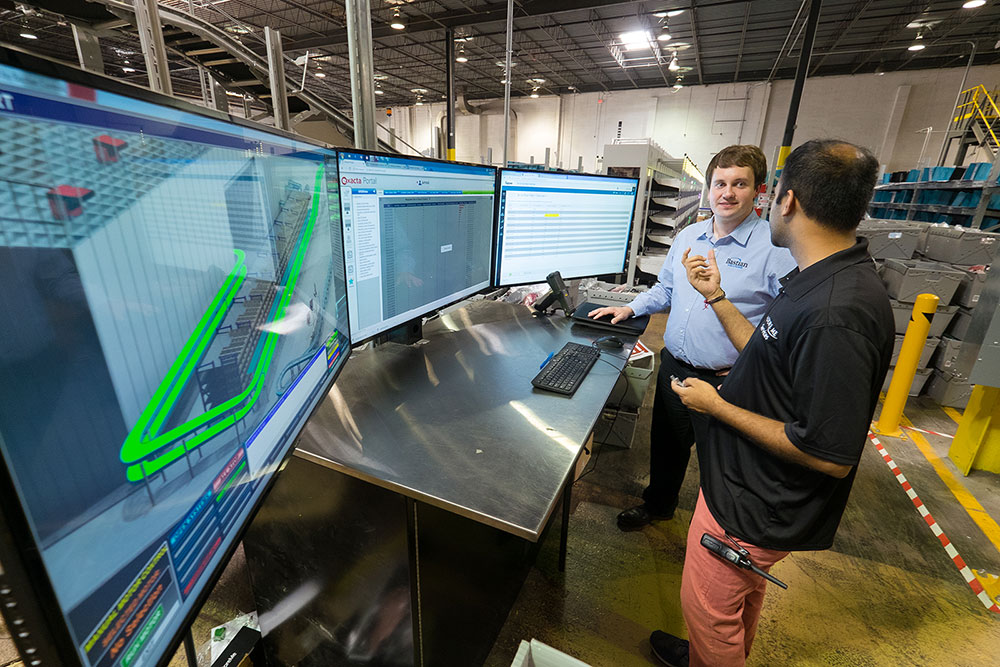
6 Ways to Maximize Your Warehouse Software Support Plan
Alex Haines | 22 December 2021
Who Needs Support?
Everyone.
Simply put, any warehouse software system with automation should require a support plan with immediate access to technicians to troubleshoot critical issues. Downtime for fulfillment operations quickly adds up to lost revenue and the ability to restore operations is critical, especially for systems that rely on heavy automation.
Without dedicated support, operations will be at the mercy of their software partners existing backlog. Priority is given to the customers with current support contracts. This can lead to long response times, and an inability for partners to commit to resolution dates for those without contracts in place. If critical issues do pop up that can be expedited, they typically come at a very high hourly rate for the effort. Don’t get caught in a tough situation. Here are six details worth knowing about warehouse software support plans.
Understanding SLAs
Most software support agreements are for 24 hours a day, 7 days a week, 365 days a year plan that grants customer access to phone and/or email communication for system issues. Understanding your Service Level Agreements, or SLAs, is key to ensuring that response and resolution times are being maintained.
For any system issue, it’s important to deem the nature of the issue and importance. Critical tickets for system down issues will, and should, be handled differently than a request for report data, for example. Each level of issue should have a response and resolution time identified, along with an action plan for follow up and Root Cause Analysis (RCA). It is important to track these SLAs to ensure that response times are being upheld and customers are providing enough information to their partners to troubleshoot the issue.
Identifying Super Users
Distribution centers can have hundreds of system users and dozens of supervisors or team leads. It is important to identify system super users that regularly interact with the support team for troubleshooting or ticket follow ups. Too many users calling in can cause inefficiencies for the support group. It is key to identify super users that regularly interact with the support group and can own and track the issues in the system.
Most support services offer an online ticketing portal that allow operations to track their system issues and send updates to the technicians troubleshooting issues. The ticketing portal should also track the number of total open issues, and response times and updates from support. Scheduling a weekly or monthly call with the account manager can be an effective way to ensure proper updates are being communicated in a timely manner.
Logging Tickets Correctly
A support technician is only as good as the explanation and data presented for analysis. The super users should be gathering as much detail as possible to document to the technician for efficient analysis.
There is a big difference between a quick call stating “this is broken” versus a documented write up that includes at minimum:
- Scenario that occurred,
- Timestamp when the incident occurred, and
- Inventory or carton ID that was affected.
These details can expedite resolution time incredibly as it allows the technicians to dive directly into the root cause. Calling in problems is very important for critical issues that require immediate engagement but following up with additional documented details is also appropriate. Operations should never be shy about the amount of information/evidence they are sending to the support team for analysis.
Ensuring Remote Access
Most support programs rely heavily on remote access to troubleshoot issues. Customers and their partners should ensure that a proper remote access system is in place for the technician to dial into the system. Keeping up with user accounts is also critical so that tedious account access does not interfere with the ability for a technician to quickly troubleshoot an issue.
Video systems and cameras can also play a key role for customers being able to illustrate an issue to the technician. Putting the technician in the operator’s shoes allows for the operator to compare the data to the situational process and paint the full picture of the issue.
Choosing a Payment Plan
Most support agreements are on an annual basis and that fee is paid for a year in full, or month by month. Customers should engage their partners to see if there are any discounts for paying early or paying for multiple years. Partners may be willing to give an additional discount to good standing partners to put their agreements in place beyond the standard terms. At worst, it can’t hurt to ask!
Identifying Your Workarounds
Lastly, and maybe most importantly, operations need to ensure proper workarounds are put in place. Dedicated support is crucial and can help restore operations in the most unfortunate circumstances, but companies should still have contingencies in place for downtime.
Understanding how to pick, pack and ship inventory and customer orders in a manual environment can help subsidize the lost production of automation down time. Accountability should 100% be placed on the support partner, but an emergency workaround should be put in place as well.
Regardless of make or manufacturer, we are ready to minimize your downtime and keep your operations running smooth. Bastian Solutions’ software services provide customers with essential support functions and around-the-clock access to technical specialists to report, track and resolve issues fast.
Alex Haines is the Director of New Business Development & Strategy Accounts at Bastian Solutions. Alex works with customers across various industries, looking for opportunities to help clients automate their supply chain to address both the pain points and opportunities posed by rapidly changing customer demands. Alex has more than 15 years of experience in global supply chain strategy, operations and sales.
Comments
No comments have been posted to this Blog Post
Leave a Reply
Your email address will not be published.
Comment
Thank you for your comment.